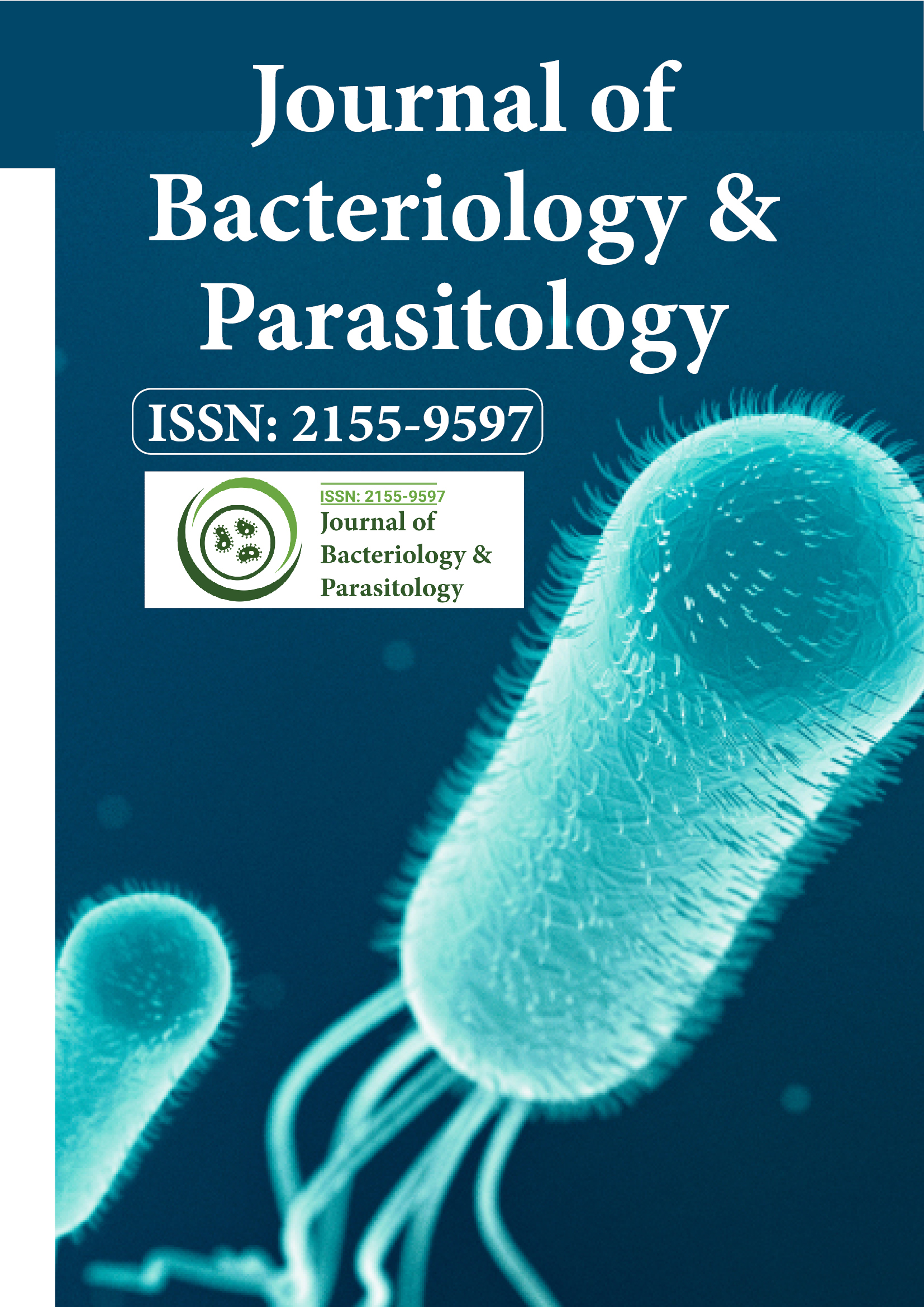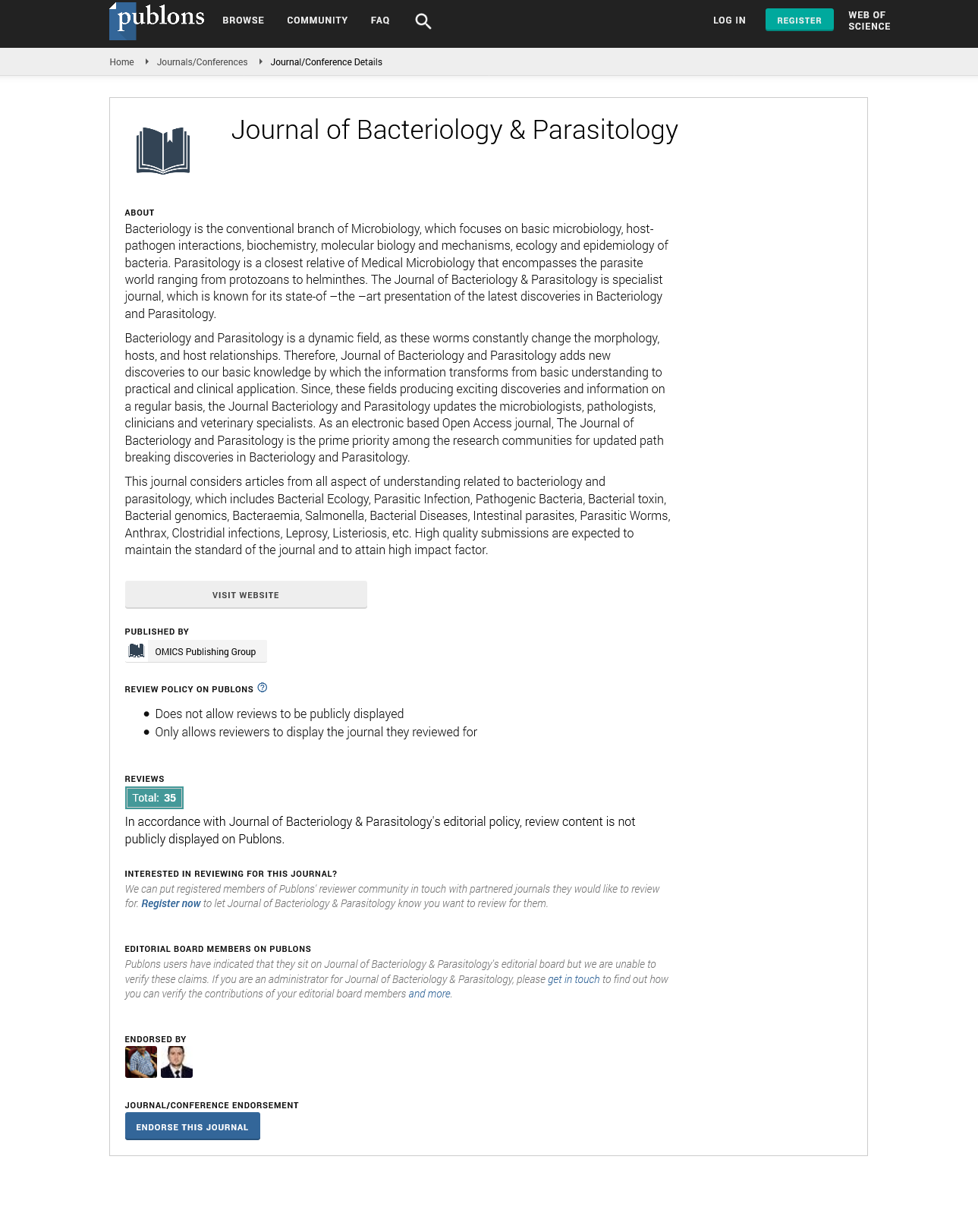Indexed In
- Open J Gate
- Genamics JournalSeek
- Academic Keys
- JournalTOCs
- ResearchBible
- Ulrich's Periodicals Directory
- Access to Global Online Research in Agriculture (AGORA)
- Electronic Journals Library
- RefSeek
- Hamdard University
- EBSCO A-Z
- OCLC- WorldCat
- SWB online catalog
- Virtual Library of Biology (vifabio)
- Publons
- MIAR
- Geneva Foundation for Medical Education and Research
- Euro Pub
- Google Scholar
Useful Links
Share This Page
Journal Flyer

Open Access Journals
- Agri and Aquaculture
- Biochemistry
- Bioinformatics & Systems Biology
- Business & Management
- Chemistry
- Clinical Sciences
- Engineering
- Food & Nutrition
- General Science
- Genetics & Molecular Biology
- Immunology & Microbiology
- Medical Sciences
- Neuroscience & Psychology
- Nursing & Health Care
- Pharmaceutical Sciences
Opinion Article - (2025) Volume 16, Issue 3
Parasite Load, Community Health, and Socioeconomic Factors in Endemic Zones
Amina Diallo*Received: 26-May-2025, Manuscript No. JBP-25-30042; Editor assigned: 28-May-2025, Pre QC No. JBP-25-30042; Reviewed: 11-Jun-2025, QC No. JBP-25-30042; Revised: 18-Jun-2025, Manuscript No. JBP-25-30042; Published: 25-Jun-2025, DOI: 10.35248/2155-9597.25.16.549
Description
In regions where parasitic illness remains common, parasite burden in communities often correlates with poverty, poor infrastructure, limited access to clean water or healthcare, and educational deficits. Parasites both protozoal and helminthic inflict chronic morbidity: Anemia, impaired cognitive development, growth delays, decreased work capacity. Children suffer schooling setbacks; adults lose productivity healthcare systems become overburdened.
Parasite density in individuals matters high loads produce more severe symptoms, greater risk of complications, and higher chances of mortality. Yet even moderate levels, when widespread, reduce quality of life. For example, children with repeated malaria episodes or chronic schistosomiasis may show stunted growth, impaired memory, increased susceptibility to other infections. Nutritional deficiencies exacerbate parasite effects: iron deficiency worsens anemia caused by worm blood loss; protein malnutrition impairs immune response.
Environmental sanitation has direct impact. In areas without latrines, open defecation contaminates soil and water with helminth eggs. Inadequate water treatment allows protozoal cysts or oocysts to survive. Agricultural practices like irrigation may create breeding habitats for parasites or insect vectors. Population density increases exposure both via more contact with contaminated surfaces and via vectors that thrive in human settlements.
Socioeconomic conditions shape exposure and access to treatment. Those with limited resources may lack protective bed nets, safe water, or ability to cook meat properly. Travel to distant clinics or inability to pay for medications delays treatment. Misconception or lack of knowledge about prevention or early signs of disease delays care seeking. Traditional beliefs may discourage use of modern therapies, or result in reliance on ineffective remedies.
Healthcare infrastructure matters. Where diagnostics are absent or unreliable, misdiagnosis leads to inappropriate treatment, sometimes misuse of drugs that promotes resistance. Drug supply chain failure leaves people without effective treatment. Health workers may lack training in parasite diseases resulting in treatment delays. Addressing parasite load in communities requires integrated strategies. Mass treatment of affected populations reduces overall burden. Community education programs raising awareness about hygiene, safe water, protective behaviors help reduce infection rates. Provision of latrines and safe water systems reduce transmission sources. Agricultural and environmental modifications limit vector habitats. Nutritional programs that address deficiency may improve resistance to infection and recovery.
Monitoring of parasite prevalence, species types, intensity, and response to treatment gives data needed to target interventions. Periodic surveys help detect changes: Emerging resistance to antiparasitic drugs, shifts in parasite species, outbreaks. Data guide resource allocation where to send medicine, where interventions like bed nets or sanitation infrastructure most needed.
Social policies play a role. Government programs that subsidize medicine, invest in rural clinics, support supply chains, enforce regulations about water safety and vector control all contribute. International aid can help where local funds are insufficient. Community involvement in decision making ensures interventions align with local culture and are more acceptable and lasting.
Conclusion
Research also investigates costâ?effective diagnostics and treatments, vaccine development for common parasites, and predictive models to foresee climate or landâ?use changes that might increase parasitic disease risk. Understanding interactions among nutritional status, parasite exposure, immune response helps design interventions that reduce morbidity even where elimination of infection is difficult. Overall, reducing disease carried by parasites in endemic zones depends on combining scientific, medical, educational, environmental and social efforts. When all parts act together, communities may experience lower illness rates, better growth in children, improved economic productivity, and healthier futures.
Citation: Diallo A (2025). Parasite Load, Community Health, and Socioeconomic Factors in Endemic Zones. J Bacteriol Parasitol. 16:549.
Copyright: © 2025 Diallo A. This is an open-access article distributed under the terms of the Creative Commons Attribution License, which permits unrestricted use, distribution and reproduction in any medium, provided the original author and source are credited.

